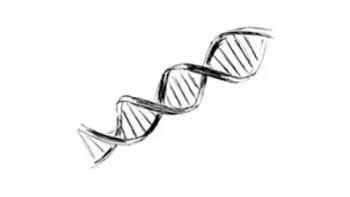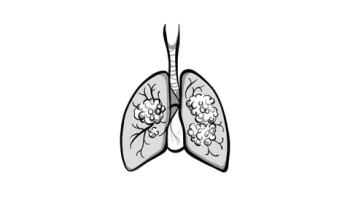
Skin Toxicity in Cancer Treatment: A Critical Part of Cancer Supportive Care
In contrast to the innovations in cancer treatments that help drive improved survival, there are far fewer innovations targeting toxicities and providing supportive care.
Cancer death rates in the United States have been steadily declining despite a concurrent steady rise in cancer diagnoses.1 This is partly driven by innovations in cancer treatment that are providing many patients with prolonged survival. These innovations, however, have introduced new challenges for physicians in managing the toxicities of chronic cancer treatment. One significant toxicity associated with both chemotherapy and the newer targeted therapies is painful and debilitating skin rash.
Cancer patients treated with either capecitabine or one of the targeted, multiple kinase inhibitor therapies such as vascular endothelial growth factor receptor (VEGFR) or epidermal growth factor receptor (EGFR) inhibitors may experience a significant skin-related toxicity. This can reduce a patient’s quality of life and, in many cases, requires dose reduction or cessation of cancer therapy. These therapies cover a wide range of indications listed in TABLE.
In contrast to the innovations in cancer treatments that help drive improved survival, there are far fewer innovations targeting toxicities and providing supportive care. This presents a challenge that requires a new focus and novel innovative therapies. Targeting the underlying mechanisms of cancer therapy could lead to reversal or prevention of toxicities and a better quality of life for patients living with cancer.
Hand-foot syndrome (HFS)
HFS (palmar-plantar erythrodysesthesia, palmar-plantar erythema, toxic erythema of the palms and soles, Burgdorf’s syndrome)5 is a common skin toxicity experienced by patients receiving chemotherapeutic treatments such as pegylated liposomal doxorubicin, docetaxel, and fluoropyrimidines such as capecitabine. Symptoms present on the soles of the feet and palms of the hands and include numbness, tingling, burning, or an itching sensation, redness, swelling, discomfort, tenderness, and rash. In more severe cases, HFS presents with cracked, flaking, or peeling skin blisters, ulcers, and sores along with intense pain, making walking or the use of hands difficult.
The incidence of any grade HFS for intravenous 5-Fluorouracil (5-FU) in phase 3 trials varies from 2.6% to 18%, while capecitabine ranges from 22% to 77%.6 HFS is distinct fromHand-foot skin reaction or HFSR (see below), although it is characterized by similar symptoms in the hands and feet.6 Combination chemotherapy and targeted therapy increases the incidence of severe HFS.7These toxicities can negatively impact quality of life, and if severe, may necessitate dose reduction, interruption, or permanent discontinuation of chemotherapies.5There is currently no FDA-approved therapy to treat HFS.
Hand-foot skin reaction (HFSR)
HFSR is frequently associated with VEGFR-inhibitor treatment. Symptoms affect the palms of the hands and soles of the feet and include redness, discomfort or pain, swelling, tingling, and blistering. Depending on the agent, the incidence of HFSR can be up to 69%.3 The incidence and severity of HFSR are dose-dependent and have been associated with improved clinical outcomes suggesting a direct toxicity mechanism.8,9 HFSR significantly diminishes patients’ quality of life and effects optimal decisions of treatment or dose.
Current HFSR treatment strategies focus on managing symptoms because there are no effective therapies that address the underlying cause of HFSR. Small studies and expert opinion have suggested treating HFSR with vitamin E, heparin ointment, hydrocolloid dressing containing ceramide, topical corticosteroids, and urea-based creams. However, the most effective management remains treatment discontinuation, interruption, and dose reduction.8 There is currently no FDA-approved therapy to treat HFSR.
EGFR inhibitor-induced skin rash
EGFR inhibitors are widely used targeted cancer therapies, though up to 95% of patients experience skin toxicities that include papulopustular (acneiform) rash, hair changes, radiation dermatitis enhancement, pruritus, mucositis, xerosis/fissures, and paronychia.4,10 These toxicities profoundly impact patients’ daily activities, independence, and psychological and emotional well-being. Management of skin toxicities caused by EGFR inhibitors is critical to ensure dose intensity, continuance, and quality of life.11 Additionally, patients with non-small cell lung cancer treated with an EGFR inhibitor and developing skin rash show better progression-free and overall survival.12 Hydrocortisone cream with or without clindamycin is one treatment option. The oral tetracycline antibiotics doxycycline or minocycline are another common option.13 For severe rash, or patients unable to tolerate antibiotics treatments, treatment discontinuation is recommended. Reintroduction of treatment often starts at a lower dose, as recommended in the product monograph. There is currently no targeted and/or FDA-approved therapy for EGFR inhibitor-induced skin rash.
Targeted Cancer Supportive Care
Current industry initiatives are focused on developing novel supportive care agents to address side effects of cancer treatments, thereby improving quality of life and, potentially, cancer treatment outcomes. By delivering drugs locally to block or reverse a cancer treatment’s effect on normal tissues, these therapies can reduce or eliminate toxicities while maintaining the efficacy of the cancer treatment. The larger strategy is to target cancer treatment mechanisms of action, reduce toxicities and maintain patients’ cancer therapy dose and quality of life.
Today’s tools include ‘computation-aided mapping of drug-target-toxicology’ which takes advantage of the existing knowledge of cancer therapies, including well-researched drug-target relationships and on-target toxicities in translatable animal models. This system uses machine learning to explore the underlying relationship between a given toxicity and drug candidates. The algorithm then ranks promising candidates based on wet-lab experiments and enables researchers to rapidly design and screen for effective compounds.
This approach has been applied for specific skin toxicities such as HFSR, HFS and EGFR inhibitor-induced skin rashes. Oncodermatology therapies are in various stages of development.
References:
1. Annual Report to the Nation on the Status of Cancer. Seer website. Accessed September 29, 2021. https://bit.ly/2WvtRYx
2. XELODA (capecitabine) tablets, for oral use. FDA website. Accessed September 29, 2021. https://bit.ly/3om6IDd
3. NEXAVAR (sorafenib) tablets, for oral use. FDA website. Accessed September 29. 2021. https://bit.ly/3Di4ycj
4. ERBITUX® (cetuximab) injection, for intravenous use. FDA website. Accessed September 29, 2021.
5. Nikolaou V, Syrigos K, and Saif MW. Incidence and implications of chemotherapy related hand-foot syndrome. Expert Opin Drug Safety. 2016; 15(12):1625-1633. doi: 10.1080/14740338.2016.1238067
6. Kwakman JJM, Elshot YS, Punt CJA and Koopman M. Management of cytotoxic chemotherapy-induced hand-foot syndrome. Oncol Rev. 2020; 14(1): 442. doi: 10.4081/oncol.2020.442
7. Hauschild A, Agarwala SS, Trefzer U, et al. Results of a phase III, randomized, placebo-controlled study of sorafenib in combination with carboplatin and paclitaxel as second-line treatment in patients with unresectable stage III or stage IV melanoma. J Clin Oncol. 2009;27(17):2823-30. doi: 10.1200/JCO.2007.15.7636.
8. Chanprapaph K, Rutnin S, and Vachiramon V. Multikinase inhibitor-induced hand-foot skin reaction: A review of clinical presentation, pathogenesis, and management. Am J Clin Dermatol. 2016;17(4):387-402. doi: 10.1007/s40257-016-0197-1
9. Nakano K, Komatsu K, Kubo T, et al. Hand-foot skin reaction is associated with the clinical outcome in patients with metastatic renal cell carcinoma treated with sorafenib. Jpn J Clin Oncol. 2013; 43 (10):1023-1029. 1023-9. doi: 10.1093/jjco/hyt110
10. Lacouture ME, Anadkat MJ, Bensadoun RJ, et al. Clinical practice guidelines for the prevention and treatment of EGFR inhibitor-associated dermatologic toxicities. Support Care Cancer. 2011; 19:1079-1095. doi: 10.1007/s00520-011-1197-6
11. Lacouture ME, Mitchell EP, Piperdi B, et al. Skin toxicity evaluation protocol with panitumumab (STEPP), a phase II, open-label, randomized trial evaluating the impact of a pre-emptive skin treatment regimen on skin toxicities and quality of life in patients with metastatic colorectal cancer. J Clin Oncol. 2010; 28:1351-1357. doi: 10.1200/JCO.2008.21.7828
12. Liu H-b, Wu Y, Lv T-f, et al. Skin rash could predict the response to EGFR tyrosine kinase inhibitor and the prognosis for patients with non-small cell lung cancer: A systematic review and meta-analysis. PLoS ONE. 2013; 8(1):e55128 doi: 10.1371/journal.pone.0055128
13. Melosky B. Supportive care treatment for toxicities of anti-EGFR and other targeted agents. Curr Oncol. 2012; 19:S59-S63. doi: 10.3747/co.19.1054







































